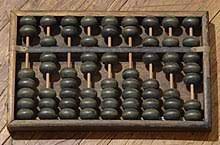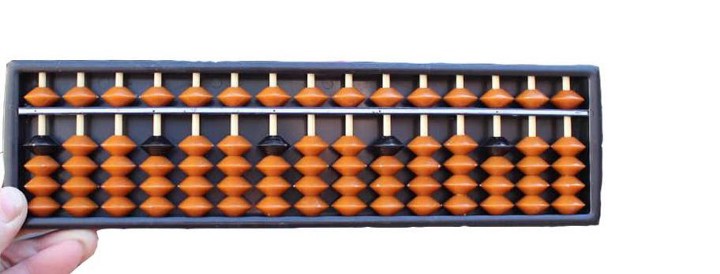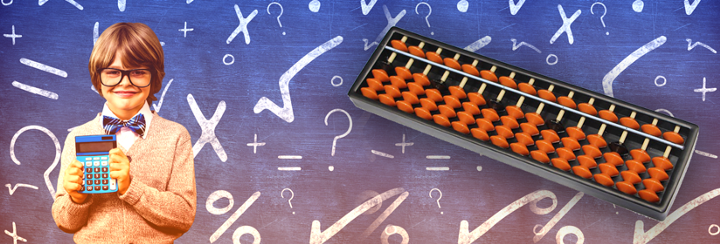Prior to the introduction of calculators, computers, and other advanced technologies, people in Asia used specialized tools to make mathematical calculations. The abacus, a practical calculating device made up of a frame with movable beads strung on a wire, was one of these tools. It is based on the principle of transferring numbers to the tool directly as the digits appear when written down. The user of an abacus is called an abacist. Though the exact date of its creation is unknown, the tool has been in use since ancient times. The most popular and commonly used designs of the abacus were made by the Japanese and the Chinese people.
Chinese Abacus( Suanpan Abacus)


The Chinese abacus, also known as the Suanpan (meaning “calculating tray”), is thought to date from the 2nd century BC. In the course of completing trade negotiations, Roman merchants gave these counting boards to the Chinese, who then modified the item to its current form. The Suanpan consists of a crossbar that separates many columns of beads. The rectangular wooden frame is split into top and lower sections by a horizontal bar. The upper deck refers to the area of the wire above the bar that is typically referred to as “Heaven,” whereas the lower deck refers to the space beneath the bar that is commonly referred to as “Earth.” A series of vertical wires or rods are strung with beads from the top to the bottom of the frame. Each of the five beads below the crossbar represents one unit, while the two beads above the crossbar represent five units each. It’s important to note that each column has a decimal value. It can be used to count upto 16 different numbers from 0 to 15. The numbers to be calculated will be represented by the beads pressed on the bar. The strategies for arranging and evaluating the beads will differ depending on the operation to be done, such as addition, subtraction, and so on.
Japanese Abacus(Soroban Abacus)

The Japanese, on the other hand, used a different style of abacus. Their abacus was dubbed the Soroban (which translates as “counting tray”). It was derived from the ancient Chinese Suanpan version. It takes the shape of a single bead on the upper deck, above the bar, and four beads on the lower deck, below it. Each rod can represent ten integers between 0 and 9. The beads are almost always in the shape of a diamond or a double cone. The frame is normally made from wood, while the material of the beads varies from metal to even plastic. Counting is done on the abacus by moving the beads up and down the rods. The thumb and index finger are used to move the beads around. Addition is done by pushing the bead towards the counting rod, while subtraction is done by moving it away. Every third rod in a soroban is marked with a dot, which distinguishes it from its Chinese counterpart. Unless the number is part of a division or multiplication calculation, every number represented on rods to the right of this designated rod is part of the decimal part of the solution. Unit rods to the left of the selected one also help with place value by indicating the number’s groupings (such as thousands, millions, etc.). Suanpan doesn’t generally have this functionality. The Japanese version hence made calculations easier.
Though numerous variations were used throughout the world, such as in Greece, Russia, and America, the Soroban abacus is the most often used type today. Even though the designs varied, the objective of using an abacus remained the same. When people learned that utilizing the device not only boosted calculating speed but also improved human brain power to do mental math, it became extremely popular.


In addition to its practical application, students who learnt to use the Soroban abacus reaped other benefits. It is still popular because it delivers useful benefits such as increased focus, confidence, visualization, and memory by acquiring a perfect grasp of the number from the root up. Despite the rapid improvements in today’s world, where technology is exploding with novel ideas to make people’s lives easier, the abacus training thus continues to play an important role.